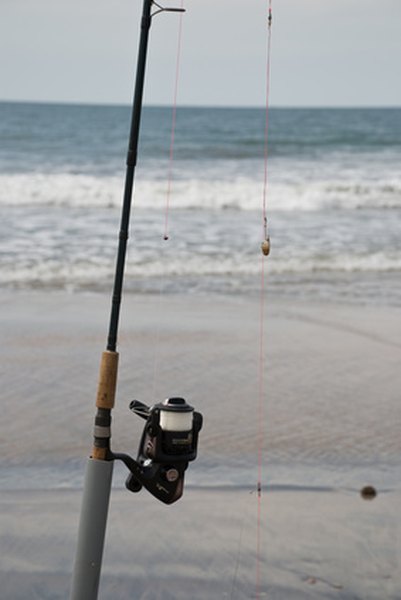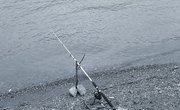
If not stopped, saltwater corrosion on reels will eventually make them inoperable. Gears, handles, drags and bearings will become encrusted with green saltwater corrosion and freeze-up. Although made to be corrosion-resistant, saltwater and freshwater reels are not corrosion-proof and must be maintained properly. All fishing reels, spinning, trolling, casting or conventional, are susceptible to saltwater corrosion in the same way, and when corrosion has set in, the following steps should be taken as soon as possible.
Items you will need
Empty plastic line spool
Screwdriver
Spray metal solvent
Paper towels
Large mixing bowl
Distilled white vinegar
Baking soda
Very fine steel wool
Clean, dry towels
Water
Reel oil, silicone spray or grease
Step 1
Take a fishing reel of any type that may have saltwater corrosion and unspool the fishing line from the reel onto an empty plastic spool.
Step 2
Use a screwdriver to remove screws from the side-plates on a conventional reel. A spinning reel can be dissembled by unscrewing the drag adjustment knob and sliding out the spool. Remove all major moving parts and spray them with solvent to dissolve any old oil or grease. Wipe clean with a paper towel and lay out the parts in the order you removed them so you will be able to reassemble them again without difficulty.
Step 3
Fill a mixing bowl with distilled white vinegar and place all the reel parts in the bowl, making sure they are all submerged in the vinegar. Add about a teaspoon of baking soda to the vinegar and stir until it begins to foam. Let it sit overnight (at least 8 hours) to allow the solution to begin dissolving the corrosion.
Step 4
Remove the reel parts from the solution and place them on a paper towel. Most of the corrosion on the reel's metal parts should now be softened or dissolved. Any remaining residue can be wiped off with a paper towel or clean cloth. If some corrosion still remains, use very fine steel wool to remove it.
Step 5
Rinse off the reel parts with fresh water and allow to dry. Apply reel oil or silicone spray to all reel parts to prevent further corrosion. Reassemble the reel.
Step 6
Practice preventative maintenance by always remembering to wash down a fishing reel with freshwater after every use. For a conventional reel, submerging it in a bucket or bowl of freshwater will prevent saltwater corrosion. A spinning reel can be washed down with a water hose or under a water faucet. Periodically, take all reels apart and apply fresh oil or grease to all moving parts.
References
Writer Bio
Anthony Potenza began writing in 1985 as a publicity and staff writer for 20th Century-Fox Film Corp. He has written a number of articles online, focusing on topics such as food and wine, photography, fly fishing and personal finance. He holds a Bachelor of Arts in English from New York University.



